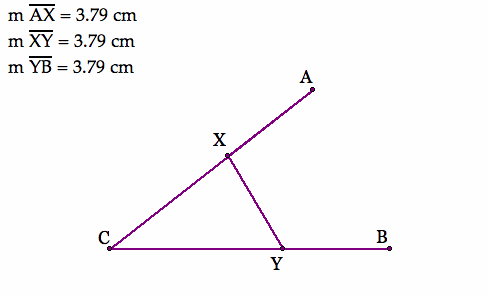
Final Problem: Assignment #6: Part 6:
by
Laura Singletary
Problem: Given three points A, B, and C. Draw a line intersecting AC in the point X and BC in the point Y such that AX = XY = YB.
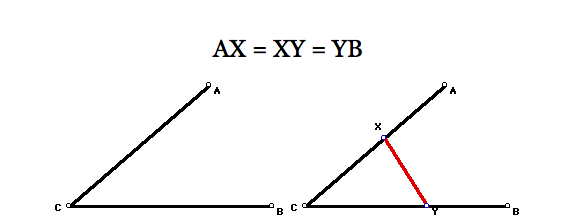

Final Problem: Assignment #6: Part 6:
by
Laura Singletary
Problem: Given three points A, B, and C. Draw a line intersecting AC in the point X and BC in the point Y such that AX = XY = YB.

(Interestingly, this was the first problem I tried to complete for Assignment #6. I was deceived when I thought this was a simple problem. After struggling with it for quite some time, I went on to another problem for Assignment #6 - hoping I might wake up one night with the answer! Unfortunately, that was not so. Several weeks later, Dana asked me in class if I had tried this problem. I began thinking about it again. It was tormenting me...And, then I finally figured it out! So, I am rather proud to write it up!)
My approach to this problem requires two important aspects: 1.) the construction of a rhombus that is parallel to the segment AC, and 2.) properties of similar triangles. I began this problem by selecting a random point on the segment CB. Let that point become the center, call it D, of a circle passing through B. We will use this circle to begin our construction of a rhombus. The rhombus is important as each of the four sides is equal in length. Also, we will construct this rhombus to have a pair of sides parallel to segment AC.

To continue with our construction of our rhombus, construct a line through D that is parallel to the segment AC. Construct the intersection of the line with the circle centered at D, call this intersection E. Also construct the segment with endpoints at A and B. Notice, the segment DE is the first side of our rhombus.
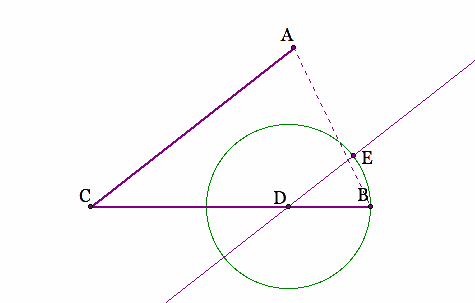
Using the newly constructed point E, construct a circle centered at E that passes through D. Construct the intersection of the circle centered at E with the segment AB, call this point F. Construct the segment FE, and this segement is the second side of the rhombus.
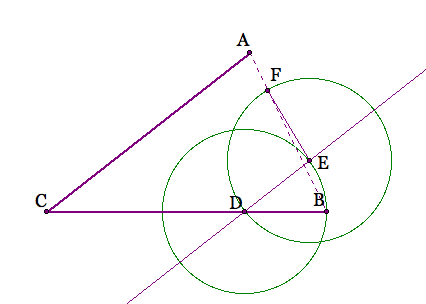
Continue with the construction of the rhombus. Construct a line through point F that is parallel to the segment AC. Similarly, construct a line through point D that is parallel to the segment FE. Construct the intersection of these two lines, and call this intersection G. Construct the a segment with an endpoint at F and an endpoint at G. Similarly, construct the segment with an endpoint at G and an endpoint at G. You have completed your construction of the rhombus, DEFG.
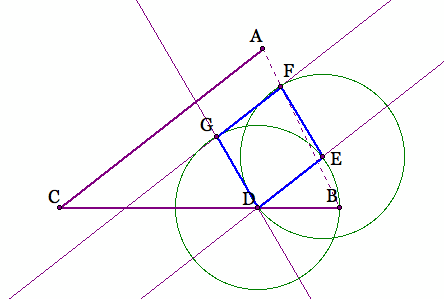
Now that we have constructed rhombus DEFG, we can utilize the fact that the side lengths of the rhombus are equal by using similar triangles. Construct a line through points G and B. Construct the intersection of this line with segment AC, calling the point of intersection X. These constructions have also formed two similar triangles. Do you see them?
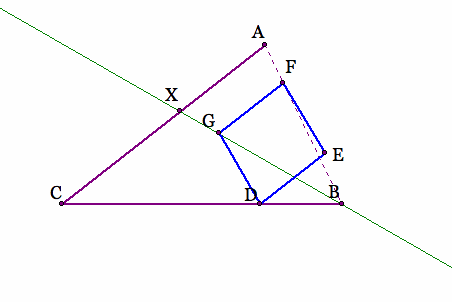
Now do you see them? Triangle BFG and triangle BAX are similar. We must construct another pair of similar triangles that uses similarity ratio of Triangle BAX: Triangle BFG and incorporates the rhombus to ensure equal lengths.
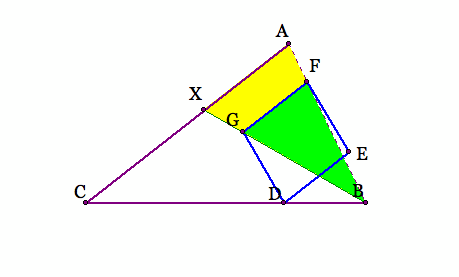
Construct a line through X that is parallel to segment FE (and segment GD). Construct the intersection of this line and segment CB, call it Y. Construct a line segment with an endpoint at X and an endpoint at Y. Once again, we have two similar triangles, triangle BDG and triangle BYX.
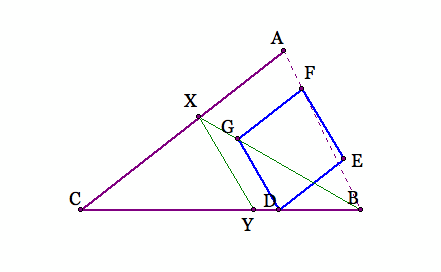
We can highlight the second pair of similar triangles. See below. Triangle BYX is similar to triangle BDG.
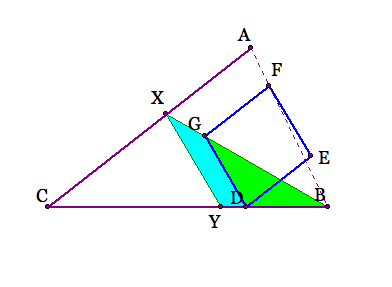
There are two very important aspects of these newly constructed similar triangles. The ratio of segment XB to segment GB is the same ratio from our original set of similar triangles. Therefore, from before we had XA:GF and now we have the same ratio with XY:GD. Since GF and GD are equal to each other, then it follows that XA is equal to XY. Also, we originally constructed DB=DE as they were radii of the circle centered D. Since we constructed the rhombus DEFG, we also know DE = GD. Using the transitive property, we know DB=GD. This implies that triangle BDG is an isosceles triangle. Since BDG is similar to triangle BYX, we know triangle BYX is isosceles. Therefore, XY=YB. Since the similarity ratio between the two sets of triangles is equal, we can also say AX=XY=YB. Tada! We have constructed two points X and Y, so that AX=XY=YB.
